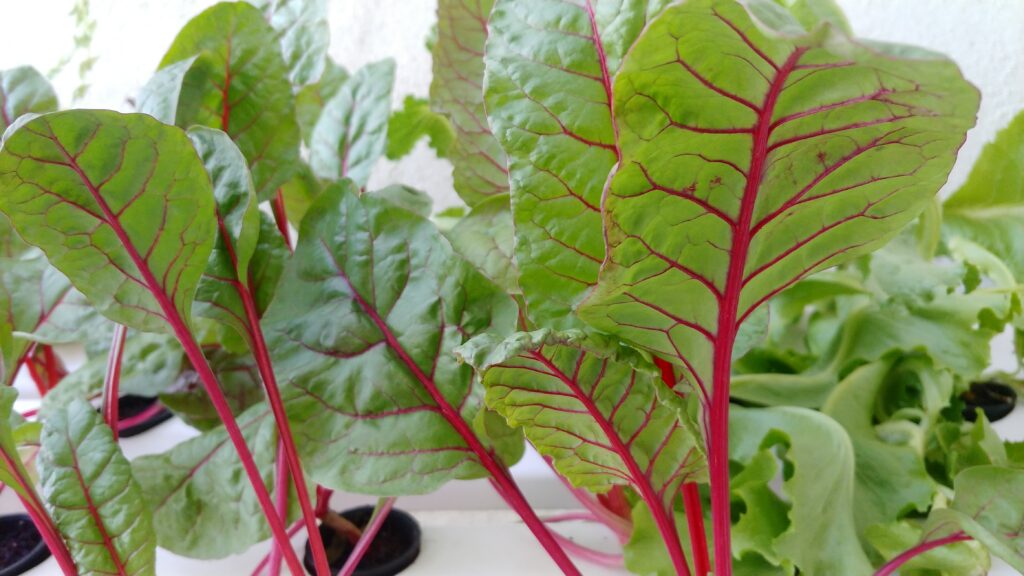In the quest to find the perfect environment for strawberries to thrive, the debate between soil and hydroponics continues to spark curiosity among gardening enthusiasts. Connecting with nature, the rich diversity and mineral composition of soil have long been seen as a key ingredient for successful growth. However, the controlled and efficient system of hydroponics presents a compelling alternative, providing plants with precise amounts of nutrients and water. As you explore the possibilities, join us in unraveling the secrets behind the optimal growth conditions for these luscious red fruits.
Nutrient Availability
Soil
When it comes to nutrient availability, soil is a natural and traditional choice for growing strawberries. The soil is a complex system that contains a wide array of nutrients that are essential for plant growth and development. These nutrients include macronutrients such as nitrogen, phosphorus, and potassium, as well as micronutrients like iron, zinc, and manganese. In soil-based cultivation, these nutrients are naturally present and can be accessed by the plants through their root systems.
Hydroponics
Hydroponics, on the other hand, is a soilless method of cultivation that relies on a nutrient-rich water solution to provide the necessary elements for plant growth. With hydroponics, nutrient availability can be precisely controlled and adjusted to meet the specific needs of the strawberry plants. This ensures that the plants receive an optimal balance of nutrients, leading to improved growth and productivity.
Water Management
Soil
When strawberries are grown in soil, proper water management is crucial for their success. Soil acts as a reservoir for water, allowing it to be absorbed by the roots and retained for future use. It is important to provide sufficient water to the plants while also ensuring proper drainage to prevent waterlogging, which can lead to root rot and other diseases. Monitoring the moisture levels in the soil and adjusting irrigation accordingly is essential to maintain healthy strawberry plants.
Hydroponics
In hydroponics, water management is more precise and efficient compared to soil-based cultivation. The plants are grown in a soilless medium such as coconut coir or perlite, which holds moisture while allowing excess water to drain away. The plants are irrigated with a continuous flow of nutrient-rich water, ensuring that they receive a consistent water supply. Furthermore, the water used in hydroponics is recirculated, minimizing wastage and promoting sustainability.
pH Levels
Soil
pH levels play a crucial role in plant health and nutrient availability. In soil-based cultivation, the pH of the soil can impact the plants’ ability to absorb specific nutrients. Strawberries typically prefer slightly acidic soil, with a pH level between 5.5 and 6.8. Maintaining the appropriate pH level in the soil ensures that the nutrients remain accessible to the plants, allowing them to thrive and produce high-quality berries.
Hydroponics
In hydroponics, pH levels can be closely monitored and adjusted to meet the specific needs of the strawberry plants. The nutrient solution used in hydroponics can be adjusted to achieve the ideal pH level, providing the plants with the optimal conditions for nutrient uptake. This precise control over pH levels ensures that the plants can efficiently absorb nutrients, resulting in healthier and more productive strawberry plants.
Oxygen Levels
Soil
Oxygen is essential for root respiration and overall plant health. In soil-based cultivation, the presence of air pockets within the soil allows for the diffusion of oxygen to the roots. Adequate oxygen levels promote root development and prevent the roots from becoming waterlogged, which can lead to root diseases. Providing proper drainage and avoiding overwatering are key factors in maintaining optimal oxygen levels in the soil.
Hydroponics
Hydroponic systems are designed to provide excellent oxygenation to the plants’ root systems. The soilless medium used in hydroponics allows for increased oxygen availability as the roots are exposed to both moisture and air. Oxygen is directly supplied to the roots through the nutrient solution, ensuring that the plants receive a consistent supply of oxygen. This high oxygen level promotes vigorous root growth, leading to healthier and more productive strawberry plants.
Root Growth and Spread
Soil
In soil-based cultivation, strawberry plants develop a dense and extensive root system. The roots spread out in search of nutrients and water, enabling the plants to access a larger soil volume. A well-developed root system plays a crucial role in nutrient uptake and water absorption, supporting the overall health and productivity of the strawberry plants.
Hydroponics
In hydroponics, the lack of soil restricts the spread of the strawberry plant’s roots. However, this limitation is compensated for by providing the plants with a highly oxygenated and nutrient-rich solution directly to their root zone. Despite the smaller root system, strawberries grown hydroponically can still achieve impressive growth and productivity due to the optimized nutrient availability and efficient water management.
Pest and Disease Control
Soil
Growing strawberries in soil poses certain challenges when it comes to pest and disease control. Soil can harbor various pathogens and pests that can negatively impact the plants’ health and productivity. Measures such as crop rotation, integrated pest management, and the use of organic pest control methods are commonly employed to manage pests and diseases in soil-based strawberry cultivation.
Hydroponics
Hydroponics provides a more controlled and sterile environment, reducing the risk of pests and diseases. Without soil, many common soil-borne diseases and pests are eliminated. Additionally, the absence of weeds reduces competition for nutrients and water, further contributing to plant health. However, proper hygiene and sanitation practices are still important in hydroponics to prevent the introduction and spread of pathogens.
Yield and Productivity
Soil
With the natural nutrient availability and more extensive root systems, strawberries grown in soil can achieve impressive yields and productivity. The soil acts as a reservoir of nutrients and water, allowing the plants to access them as needed. Combined with proper cultural practices and care, soil-based cultivation can result in bountiful harvests of delicious strawberries.
Hydroponics
While hydroponics may not offer the same extensive root systems, it compensates with precise control over nutrient availability and optimized growing conditions. The ability to closely monitor and adjust the nutrient solution, water, and pH levels can lead to enhanced plant growth and increased productivity. Hydroponics can also provide a year-round growing environment, extending the harvest season and resulting in a higher overall yield.
Environmental Impact
Soil
Soil-based cultivation is generally considered more environmentally friendly due to its reliance on natural processes. Soil acts as a buffer, aiding in water filtration and reducing runoff, thereby protecting water resources. Additionally, the use of organic farming practices in soil-based cultivation reduces chemical inputs and promotes soil health and biodiversity, making it a sustainable choice for strawberry production.
Hydroponics
Hydroponics offers several environmental benefits as well. Since hydroponic systems are soilless, they avoid soil degradation and erosion. The recirculation of water and precise nutrient dosing can significantly reduce water usage and minimize nutrient leaching into the environment. Furthermore, hydroponics can be practiced in urban areas, utilizing limited space and reducing the need for transportation of fresh produce.
Maintenance and Labor
Soil
Soil-based cultivation generally requires regular maintenance and labor-intensive tasks. These tasks include weeding, fertilizing, and managing pests and diseases. The nutrient levels in the soil need to be regularly monitored and adjusted to ensure the plants receive an optimal balance. While it may require more effort, working with soil can be rewarding and enjoyable for those who appreciate the traditional approach to growing strawberries.
Hydroponics
Hydroponics offers the advantage of reduced maintenance and labor requirements. With the precise control over nutrient delivery, there is no need for frequent fertilization or soil amendments. The absence of weeds also eliminates the need for manual weeding. While occasional monitoring of the system and maintaining proper sanitation are necessary, hydroponics can be a more efficient and time-saving option for growing strawberries.
Flavor and Nutritional Value
Soil
Many strawberry enthusiasts argue that strawberries grown in soil have superior flavor and nutritional value. The natural complexity of the soil, with its diverse range of nutrients, contributes to the development of rich flavors in the berries. Additionally, the soil provides a favorable environment for the plants to fully express their genetic potential, resulting in berries that are packed with essential vitamins, minerals, and antioxidants.
Hydroponics
While flavor and nutritional value are subjective, hydroponically grown strawberries can still offer exceptional quality. The precise control over nutrient availability allows growers to optimize the berry’s composition and enhance its flavor profile. While the taste and nutritional content may vary slightly from soil-grown counterparts, hydroponic strawberries are often praised for their consistent sweetness and overall quality.
In conclusion, whether strawberries grow better in soil or hydroponics ultimately depends on various factors, including personal preferences, available resources, and specific growing conditions. Both cultivation methods have their advantages and disadvantages, and it is essential to weigh these factors when choosing the best approach for growing strawberries. Ultimately, the goal is to cultivate healthy and productive strawberry plants that yield delicious and nutritious berries, regardless of the cultivation method chosen.







